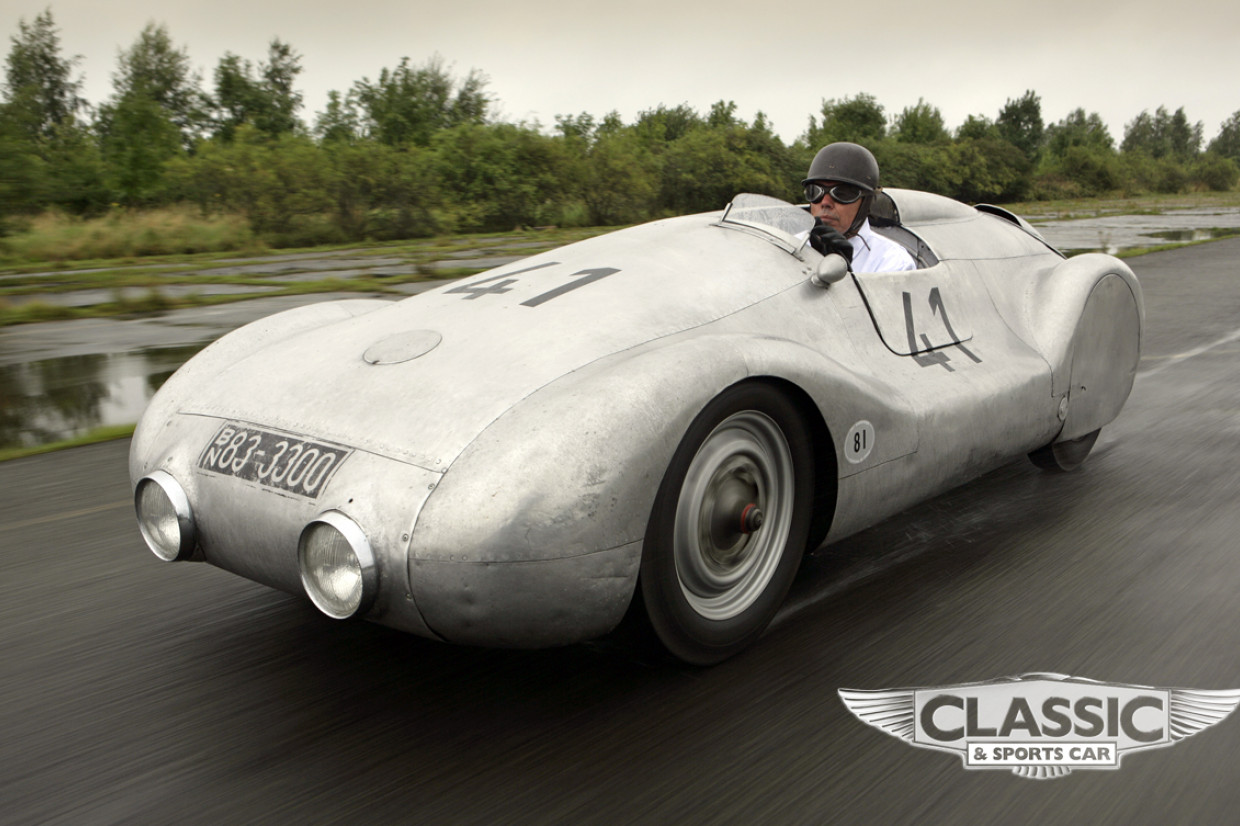Prill’s team went to great lengths to preserve and match the car’s patina: “ We had to use a new crank and bearings but the lovely lightened rods are original. We even cleaned up all the plug leads with thinners so we could find new ones that matched. There were no shields for the exhausts and the tail would get so hot you could fry an egg on it. We had to make new covers.”

News of the rebuild attracted plenty of Beetle experts who confirmed the chassis spine (1-063928) was probably a WW2 Kübelwagen. The wheels are early VW while the brakes are Beetle steel drums but with finning shrunk on to them. “The huge amount of effort and trouble that’s gone into this car is staggering,” says Prill.

The bodywork is a jigsaw of 20-plus sections including the under-tray – all riveted together. Clever details include quick-release clips for the rear spats. “You can see the aircraft experience in much of the construction,” says Prill. “The body is extremely light and slippery.” A novel touch is a reversed Heller sidelight turned into a mirror.

Only a privileged few have driven the Müller special and its wonderfully preserved state makes the occasion even more special. It would have been epic to have taken this 550kg featherweight back to Montlhéry, but the bleak conditions on an ex-USAF base in Essex echo the car’s ill-fated first record attempts. When the rain finally lets up I contort into the tight cockpit. For a record car that ran for long, relentless stretches you’d expect a better thought-out workplace. In classic Silver Arrow style, the steering wheel has to be removed from its splined column before entry is possible. The record team must have all been short for even my 5ft 7in is tight in here. The upright seat is basic with a simple padded cushion and the instrument cluster, with big VDO speedo and rev counter, is clearly visible through the broad, three-spoke wheel. With tacho marked to 8000rpm, Prill reckons the Germans were too logical to fit it just for show and probably ran to 7000rpm in anger but we’re limited to 4800rpm today. My eyes are more focused on the oil temperature with this historic air-cooled flat-four. The pedals are typical early Beetle and mounted off the spine with a roller throttle. At least there’s a footrest for those long, tedious record sessions. The gearstick sprouts upright but is dwarfed by the huge handbrake. All the brackets and frame are extensively drilled.

Time to start. Even with the tamer compression of 12.5:1, this engine doesn’t like to wake from cold and the carbs have to be primed with a syringe of fuel. After cranking over to build compression it finally chugs into life, the exhaust emitting a bizarre glugging note that sounds like a wino knocking back a bottle of whisky. As it warms and settles to idle, the noise is more like a vintage aero motor running under water. Carefully feeding in the revs to avoid stalling, the clutch bites and it’s off. As the Solex throats open and revs build, the engine gets smoother and, after a few cautious runway passes, I stretch it to 4000rpm. The effect is dramatic on cam, with a turbo-like rush launching the car faster. Running on skinny 16in tyres, it starts to feel nervous and at one point where there’s a gap in the old runway hedge, a crosswind knocks the special off course. With its slow, finger-light steering, it would be a challenge to catch at top speed. Around wet corners the Müller is even more nervous as the heavy back quickly breaks traction yet it feels progressive up to a point. The gearchange initially feels rubbery but once up to speed the gate gets more positive. The brakes too, thanks to the lack of mass, feel more confident.

As the rain returns I pull up, unbolt the wheel and clamber out full of respect for Müller, von Hanstein, Polensky and Glöckler. No wonder they took their partners along to the French speedbowl. Running flat-out for 48 hours must have taken critical focus. But, away from gloomy recovery in Germany, the trip to Montlhéry with motoring chums must have felt like a holiday.














